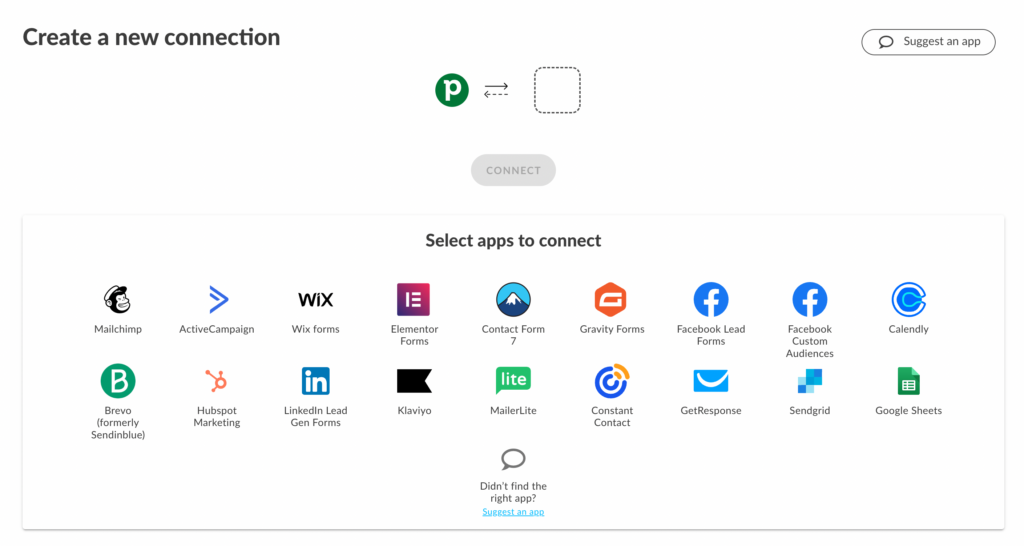Last edited: July 2025
From strolling scientists wandering the mountains of Switzerland to a global tech consortium. Getting stuff to connect, be it physically, mechanically, or digitally can have profound effects.
Here’s a list of the first 5 connectors that started connecting things better and easier than before, and thus helped to create the world we live in.
1. Velcro
From humble beginnings in the Swiss mountains, Velcro has become a household name, synonymous with panicked parents desperately trying to get their childrens’ shoes on in a hurry. But did you know that it was NASA who came along and prevented Velcro from slipping into obscurity?
The Velcro story starts in the 1940’s with a Swiss engineer and a rather annoying plant.

George de Mestral, our aforementioned engineer, was out hunting in the Jura mountains with his dog when he noticed that both him and his four-legged friend were absolutely covered in spiky plants. Curious, de Mestral decided to take some of these plants, known as burdock seeds, back to his lab and throw a couple of them under the microscope to see if he could figure out what was up.
Well, turns out that the burdock seeds were covered in tiny hooks that would get caught up in the loops found in fabric. So, initially driven by his curious nature as a scientist rather than any real business motivation, he set out to see whether there’d be someone willing to manufacture a synthetic version.
Eventually, he found a manufacturer with the tech (and interest) to make some samples to get the idea off the ground, then de Mestral further refined his product and manufacturing processes. But there was another problem.
Product market fit.
You see, de Mestral was an engineer, so it’s understandable that he’d spent more time looking at how to solve a problem rather than understanding whether it was a problem that other people would be happy paying money to solve. And, for a time, it looked like Velcro would be another of the countless forgotten inventions, destined to be nothing more than a curiosity.
Then, NASA came knocking. They were looking for a way to keep objects aboard the Apollo spacecraft secured when in orbit. Almost overnight, Velcro went from oddity to space age cool. Finding its way into high fashion, practical clothing.
And, of course, kids shoes.
2. Superglue
From physical bonding to something with a little more chemistry now: superglue, or to give it its “proper” name, cyanoacrylate. I’ll just keep calling it superglue though, thanks.

Like so many of the world’s inventions, superglue was born in the white hot race for military supremacy during WWII. It was also invented almost entirely by accident.
A lot of people associate superglue with military medical applications, gluing soldiers wounds together in combat zones. And this did happen, but not until the Vietnam war.
No, it was in fact gunsights that gave us superglue.
You see, the good people at Eastman Kodak were testing different chemical compounds, initially trying to develop a clear, plastic gunsight and, one particular compound caught their eye by being really rather terrible at being a gunsight. It did, however, bond every surface it touched together, and very quickly.
From the late 1950’s, Eastman Kodak marketed their new sticky stuff as the super-snappy “Eastman #910”, before rebranding it as “super glue”. The compound was then licensed out to Loctite, and many others by the 1970’s.
While superglue has certainly made millions of lives easier, helping people mend broken objects, it also has a rather annoying habit of not really caring about the things it gets applied to. Although I’ve never had to use eyelash extensions myself (I was born with luscious lashes), I’ve learned that the compound used to stick fake lashes on is the same as superglue.
And, being a clear liquid that can sometimes get stored in close proximity to something like, oh, I don’t know, eye drops, leads to not infrequent cases of people accidentally gluing their eyes shut.
3. Freight connectors
Of all the world-changing connectors I’ve spent time researching for this post, connecting freight-pulling vehicles to the things they’re pulling feels like the one with the biggest impact, for better or worse.
In North America, early railroads favoured the “link and pin” system. This system lacked any kind of unification with sizes and tolerances all seemingly done on a batch-by-batch basis.
This lack of a unified connector was a problem. Firstly, some poor soul had to climb down in between the moving cars and figure out how the connectors should interlock (and if they could at all). This consumed a lot of the engineers time and time is money.
There were also the engineers themselves who would end up crushed between the cars with monotonous regularity, although that was of little concern to the railroad barons. This was long before OSHA was even a twinkle in a bureaucrats eye.

Even so, the late 1800’s saw the development of an automatic coupler. While there are many different types of coupler, generally each type of rolling stock uses interchangeable couplers, for faster, safer switching between cars.
Road trucks went through much the same process, before finally coming to the “fifth wheel” system we see used in road haulage today.
So, we have rail and road freight using their own standardized connectors, speeding up the flow of goods between point A and B. Then, just after WWII, along comes the shipping container.
The car I drive. The computer I am writing this on. The clothes we wear. All these things are accessible and, more importantly, affordable thanks to the humble shipping container.
But as elegantly simple as the shipping container is, it would be far less effective without not just a standardized link between the container itself and the trailer, but also the trailer and truck or train.
4. USB
Sticking with the theme of hardware-based revolutions, next let’s take a closer look at USB, or Universal Serial Bus, which brought unity and standardization to the world of computer connectors.
Up until the later 90’s almost every flavour of computer peripheral had its own type of connector. You had PS/2 connectors for keyboards and mice. Parallel ports for printers. Game ports for joysticks. Most computers would come with a handful of the most common connectors built in, but if you wanted to expand the connectivity of your computer you either had to get your hands dirty and install some sort of add in card, or pay someone else to do it for you.
These older connectors also had another limitation: they were slow as all hell.
Born in an era when hard drive capacities were measured in the megabytes, parallel ports topped out at anxiety-inducing 100 kilobytes per second. Their smaller, serial cousins went a bit faster, but not much, peaking at a similarly dreary 450 kilobytes per second.

So, in late 1995 the USB protocol was born, based on the work of Ajay Bhatt of Intel and a consortium of interested businesses, which included the likes of Microsoft, Apple, and Hewlett-Packard. Perhaps showing their hand early, Apple were the first to ditch legacy ports entirely when the iMac G3 debuted.
Spin forward more than two decades and, well, I’m not so sure we’ve really progressed as much as we maybe should have. Yes, things are faster, for sure. But things can still be pretty confusing for the average consumer.
As USB itself has developed, it’s become a bit of a standardization nightmare itself. Again, anecdotally not as bad as things were, but still not really the utopian vision of hardware connectivity we were all promised back in the 90’s.
5. Web APIs
First, a very layman-friendly explanation of what an API, or application programming interface actually does. Very simply, it’s a way for apps to communicate with one another. Regardless of what platforms those apps are built on or what languages they’re written.
Although the API was (and still is) a means for machines to communicate with one another, the fundamental advantage that it offered was that it made people’s lives easier.
The modern API started with Roy Fielding’s paper, “Architectural Styles and the Design of Network-based Software Architectures” but it was Salesforce’s Marc Benioff who saw the sea change this idea could bring to the world of online business.

In February 2000, Salesforce released the world’s first commercially used API into the wild, ushering a shift from a static, siloed web (and web apps), to a dynamic, interconnected one. Next Amazon and eBay were two of the bigger players to get involved, both spotting how they could create and expand their markets.
For example, Amazon allowed third-party sites to search and show products from Amazon.com, and that third-party would get a cut when they made a sale. eBay did something similar. Business was booming, both for the “big” players and for the API-loving entrepreneurs who were able to tap into these ecosystems.
Then the music stopped.
When the dot com bubble imploded, many of these smaller online businesses vanished almost overnight and development of web technologies ground to a halt too, APIs included.
But it wasn’t long before APIs would once again come to the fore, but to a slightly different tune. You see, this time rather than revolutionising the lives and businesses of entrepreneurs, the next breed of API took aim at simplifying the lives of everyone, introducing the underpinnings of the connected world we see around us today.
Flickr, was the first of these. Their API allowed people to host photos on the Flickr platform, but then share them to any of the handful of social media sites that were popping up at the time. In 2006, Facebook released their API.
The rest, as the cliche goes, is history. Today, almost all the digital products we use are built on APIs.
The map inside Uber? Google Maps API.
Weather forecast on your phone or desktop? Yahoo! Weather API.
Buying anything online? The whole Amazon runs on internal and external APIs.
The confirmation text you received to log into your favourite productivity app? Twilio SMS API.
There are many good reasons for using APIs but experts agree that the main one is that APIs help to build better digital experiences and products.
Why are we writing about connectors?
Connecting different surfaces saves lives on a battlefield, and can fix a broken toy in minutes (perhaps not saving a life, but definitely saving the day).
Connecting data easily can get a car to pick us up in 4 minutes, and make your smartphone, well, a lot smarter.
Easy connections make the world a better place.
But.
Not everything can be connected smoothly yet. One area that’s definitely not connected well is sales and marketing tools, and the data they generate in SMBs.
And we’re changing that. Imagine a future where you can connect any sales and marketing tool deeply and easily. Use a CRM like Pipedrive, a marketing tool like ActiveCampaign and a lead capture tool such as Wix Forms, and have the data come together as if you were using a “marketing suite”. (And, of course, without the price tag of a “marketing suite”.)




